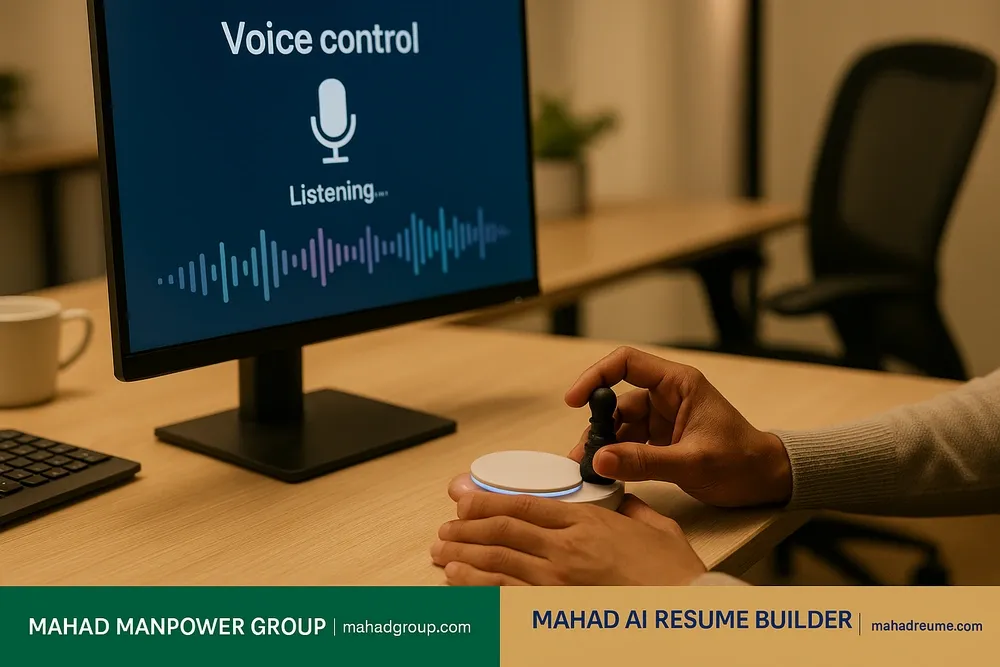How AI Tools Are Opening Doors For Employees With Disabilities. The modern workplace is undergoing a profound transformation as artificial intelligence reshapes how businesses approach accessibility and inclusion. AI tools are unlocking previously unattainable or impractical opportunities for employees with disabilities. AI in the workplace workforce preparing for
AI Tools Are Opening Doors For Employees.
For millions of workers worldwide, traditional workplace environments present daily challenges that limit their potential and career advancement. Physical disabilities, visual or hearing impairments, cognitive differences, and chronic health conditions have historically created barriers to employment and professional growth. But advanced AI technologies are breaking down these barriers with amazing speed.
AI Tools Are Opening Doors For Employees: The U.S. Bureau of Labour Statistics reports that in 2023, employment rates for people with disabilities were only 21.3%, while those without disabilities accounted for 65.8%. This stark disparity underscores the pressing need for workplace innovations that promote fairness. AI-powered solutions are now bridging this gap by providing personalised accommodations that adapt to individuals’ needs without requiring extensive infrastructure changes.
Breaking Communication Barriers With Intelligent Technology
Communication represents one of the most significant challenges for employees with hearing or speech disabilities. AI tools are opening doors for employees by offering real-time speech-to-text transcription services that convert spoken words into written text instantly. These applications work seamlessly during meetings, presentations, and everyday conversations, ensuring that no one misses critical information.
Natural language processing systems have also revolutionised the way employees with speech impairments express themselves. Text-to-speech applications powered by AI can vocalise written messages with natural-sounding voices, enabling meaningful participation in discussions and presentations. Some advanced systems even learn individuals’ speech patterns, making communications more intuitive and personalised over time.
Visual Assistance Through Computer Vision
AI Tools Are Opening Doors For Employees with visual impairments. AI-driven computer vision technology has become transformative. Screen readers enhanced with machine learning algorithms now provide detailed descriptions of images, charts, and complex visual data that traditional assistive technologies struggled to interpret. These tools don’t simply read alttext; they analyse visual content and provide contextual understanding.
Object recognition software helps employees navigate their physical workspaces by identifying obstacles, reading signs, and even recognising colleagues’ faces. Smart glasses equipped with AI can describe surroundings in real-time, providing independence that dramatically enhances workplace mobility and confidence. The Americans with Disabilities Act requirements become easier to fulfil when technology actively supports accessibility rather than treating it as an afterthought.
Cognitive Support and Mental Health Accommodations
AI tools are creating opportunities for employees with cognitive disabilities and mental health conditions by implementing personalised organisational systems. Intelligent task management applications break down complex projects into manageable steps, providing reminders and guidance tailored to individual working styles. These systems reduce overwhelm and anxiety while improving productivity and job satisfaction.
AI tools are creating new opportunities for employees. Predictive analytics can identify patterns that indicate stress or burnout, prompting timely interventions before issues escalate. Some AI platforms offer discreet mental health support through chatbots that provide coping strategies, mindfulness exercises, or connections to professional resources when needed.
Physical accessibility is enhanced by automation.
AI Tools Are Opening Doors for Employees with physical disabilities benefit enormously from AI-powered automation and robotics. Voice-controlled systems allow workers to operate computers, adjust environmental controls, and manipulate equipment without physical interaction. Robotic assistants are capable of retrieving items, opening doors, and carrying out tasks that would otherwise necessitate physical exertion or mobility.
Ergonomic AI systems monitor posture and movement patterns, suggesting adjustments that prevent strain and injury. For employees managing chronic pain conditions, these proactive interventions make sustained employment more feasible and comfortable.
Customised Learning and Professional Development
AI Tools Are Opening Doors For Employees: Traditional training programmes often fail to accommodate diverse learning needs, creating barriers to skill development and career advancement. AI-driven learning platforms adapt content delivery based on individual processing speeds, learning styles, and comprehension levels. Employees with learning disabilities can access information in formats that work best for them, whether through audio, visual, interactive, or text-based materials.
AI Tools Are Opening Doors For Employees: These personalised educational experiences ensure that professional development opportunities remain accessible for everyone, regardless of their learning differences. The technology continuously adjusts difficulty levels and pacing, preventing frustration while maintaining appropriate challenges.
Creating Inclusive Hiring Processes
AI tools are opening doors for employees before they even enter the workforce by transforming recruitment practices. Blind resume screening powered by AI removes unconscious bias while identifying qualified candidates who might have non-traditional career paths due to disability-related employment gaps. Interview assistance tools provide real-time support for candidates with anxiety or communication challenges, allowing their skills and qualifications to shine through.
Some organisations use AI to create virtual job simulations that assess competencies rather than traditional interview performances, which may disadvantage certain candidates. This approach reveals true potential while accommodating various disabilities.
The Path Forward: Building Truly Accessible Workplaces
AI Tools Are Opening Doors For Employees: While AI technology offers extraordinary promise, its successful implementation requires intentional efforts from organisations. Companies need to invest in these tools and design them with genuine input from employees with disabilities. Technology should empower rather than replace humans and empathy in workplace accommodations.
The U.S. Department of Labour’s Office of Disability Employment Policy provides extensive resources for employers seeking to enhance workplace accessibility. Organisations that embrace AI-driven accessibility solutions position themselves as industry leaders while tapping into talented, often overlooked workforce populations.
As AI capabilities continue advancing, the workplace of tomorrow promises unprecedented inclusion. The barriers that once seemed insurmountable are steadily falling, replaced by environments where ability, not disability, defines potential. This technological revolution isn’t just opening doors—it’s removing them entirely, creating workplaces where everyone can contribute their unique talents without limitation.



